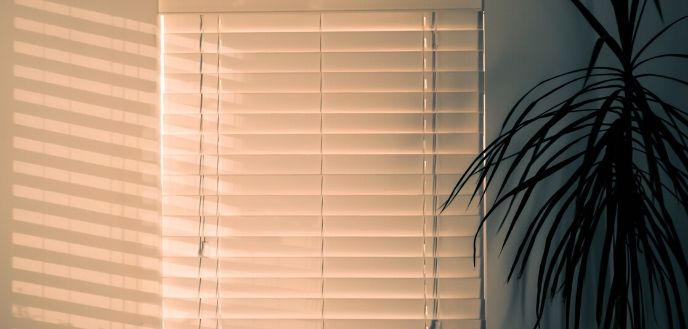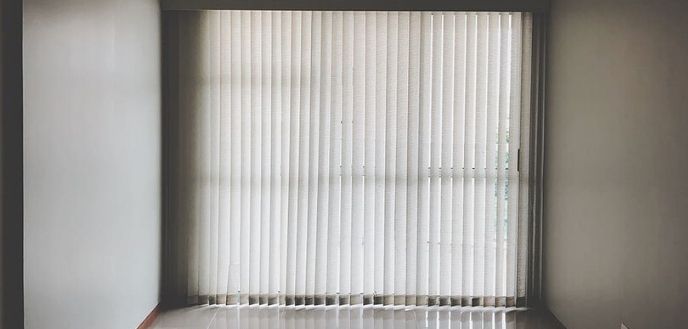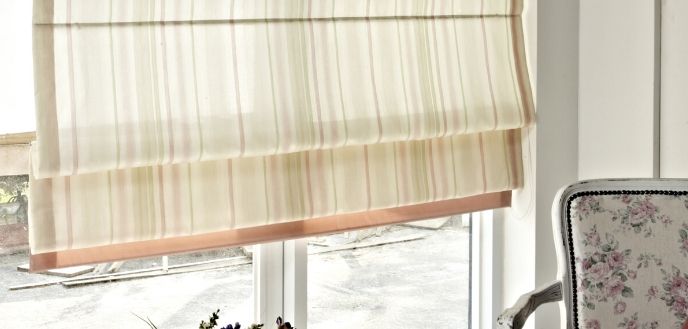When it comes to window treatments, there’s no shortage of options available. But which one is right for your home?
In general, there are three main window treatment options on the market: blinds, curtains and shades. A general handyman service can help you install all three, but before you call us, here’s a quick breakdown of each window treatment option to help you choose the right one:
Breaking Down Blinds, Curtains and Shades
Blinds

Blinds are horizontal or vertical slats that overlap and fold up onto one another when shut. They are usually made of hard materials like vinyl, PVC, wood or metal. There are a number of blind options available, ranging from highly affordable to wildly expensive, but in general, blinds provide solid, easily-moveable coverage from light and prying eyes alike. If you have young children or pets, you may want to choose a more durable material like wood or metal.
Popular Types of Blinds
- 1-Inch White Blinds: This is the standard window treatment option found in most homes. While not the most stylish or durable blinds available, they are much more affordable than other options.
- Vertical Blinds (pictured below): These blinds usually consist of long, vertical strips of vinyl or PVC, though they can be made with other materials including fabric. They are open and shut horizontally, which is why they are often used to cover tall windows or sliding doors. Note: these blinds can move and clack loudly in the wind or fast moving air. If you like the fan on high when you sleep but like a quiet bedroom, you may want to choose another blind type.
- Venetian Blinds: These are horizontal, usually wooden slats that can be tilted to let in or block light. They are also called wood or bamboo blinds in the United States.
 Vertical Blinds: These blinds are great for covering sliding glass doors.
Vertical Blinds: These blinds are great for covering sliding glass doors.
Curtains

If you’re looking for a more stylish window treatment option, curtains are a great way to go.
Thicker or black-backed curtains are a great option for keeping both light and heat out during the summer months, and keeping any cold drafts out during the winter.
Curtains can be used over blinds or shades to double up on your light and privacy coverage.
If using curtains for tall windows, make sure to choose a seamless curtain rod to make pulling them shut easier.
Curtains are not ideal for high-traffic areas like sliding glass doors.
Popular Types of Curtains
- Grommet Drapes: These curtains are hung via what look like hole punches across the top of the fabric. When opened, the fabric folds into itself, creating a soft, flowy look. These are ideal for window of all shapes and sizes.
- Rod Pocket: As the name suggests, rod pocket curtains have a built in pocket sewn into the top of the fabric where it is slipped onto the curtain rod. These are great for dressing up smaller windows, but not functionally ideal for larger ones, as sliding the curtain along the railing can be difficult with large amounts of curtain.
- Ring Top (pictured): These curtains allow you to hook the fabric onto decorative curtain rings which slide smoothly along the rail. The best part? You can easily swap curtain fabrics without having to change your rod or rings out entirely. If you’re looking to cover large, floor-to-ceiling windows, ring top curtains are a great way to go, as they’re very easy to push open and closed.
Pro-Tip: If you’re looking for window dressings for a large room and windows, you can have an electrical professional install a remote-controlled, motorized curtain track for tall or hard-to-reach curtains.
Shades

Shades are made from fabric. You can purchase shades in a variety of sizes and fabric weights.
Shades tend to be more durable than blinds, and many are available in cordless options that are safe for children and pets.
They tend to be more expensive than blinds, but provide more insulation for your windows, making them more energy efficient.
Popular Types of Shades
- Roller Shades: The simplest and most affordable option, roller shades operate on a pulley system that allows them to roll up, like a roll of tape or wrapping paper. You can order these in soft fabrics, burlap or vinyl, but you can also order bamboo roller shades for a more tropical or natural look.
- Roman Shades (pictured): These are pleated, heavy fabric shades that fold up into one another when pulled up. Roman shades have a very distinct look, and when operated properly, add crisp, clean lines to your windows.
- Cellular Shades: Similar in appearance to 1-inch blinds, cellular shades consist of a formed sheet of double-sided fabric with with many pleats, or cells. They are ideal for softening light in rooms, though black-backed shades can be purchased for more total coverage. Top down bottom up cellular shades are an affordable, easy-to-use and child-friendly window treatment option, as they have no cords and can simply be pushed up or down to open and close them.
Need help installing your window treatments? Call Handyman Connection
Once you’ve found the right blinds, curtains or shades for your home, reach out to Handyman Connection to have an expert handle the installation.
We offer general handyman services across the United States and Canada, we’re happy to help put in place the window treatment option that’s right for you.
To connect to a local team of skilled craftsmen today, call 1-800-88-HANDY.
The post Choosing Blinds, Shades or Curtains: What to Consider appeared first on Handyman Connection.